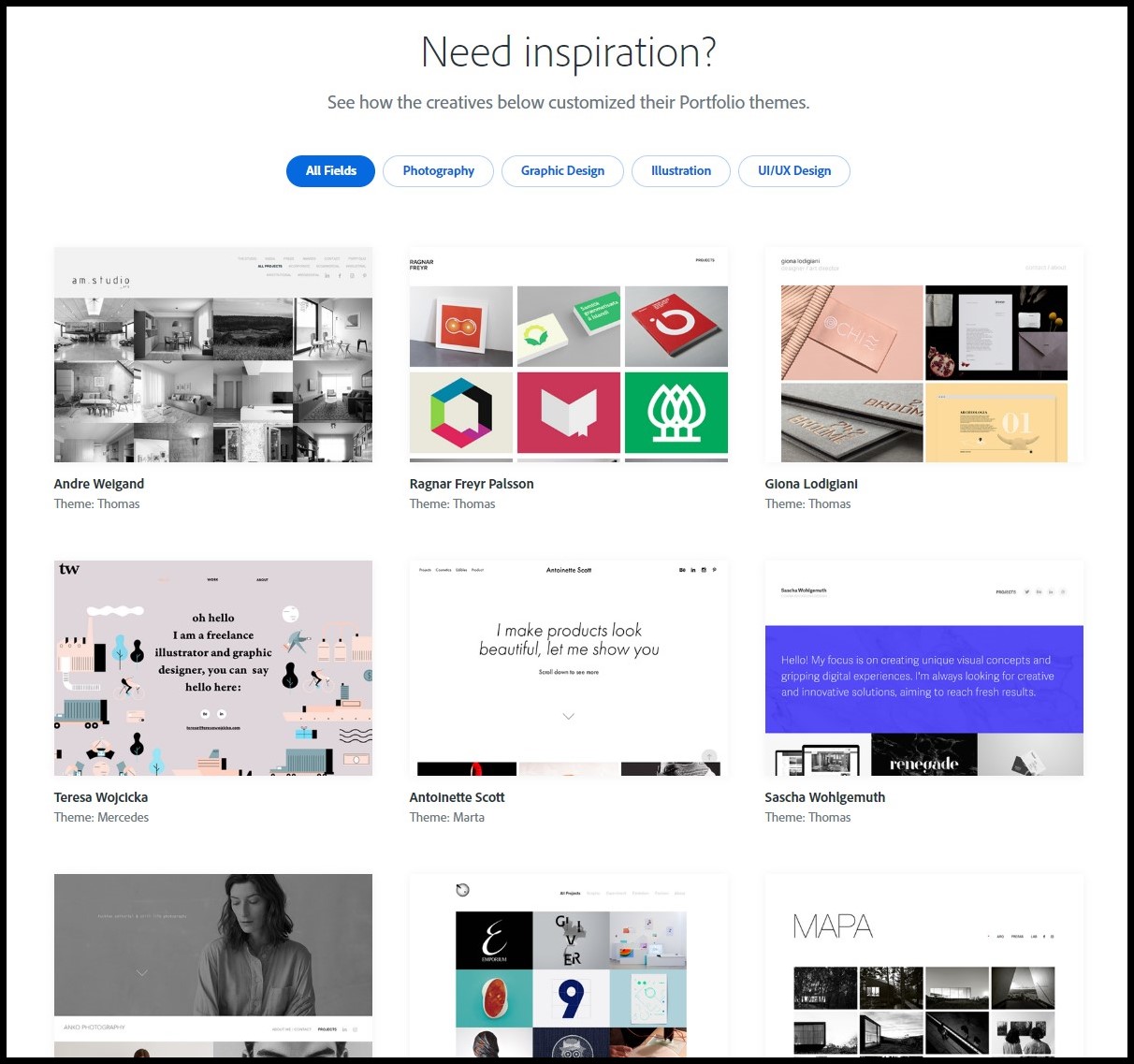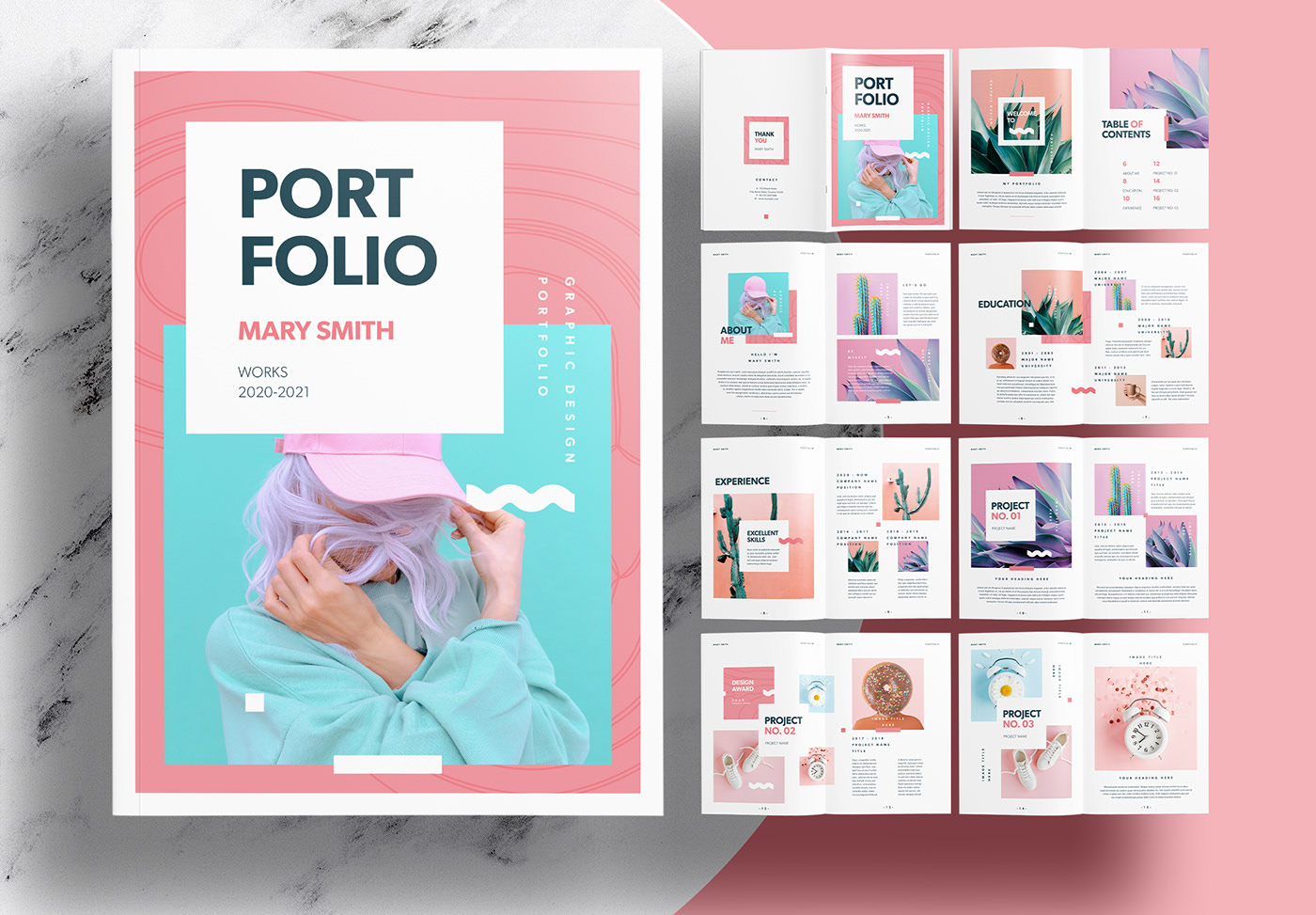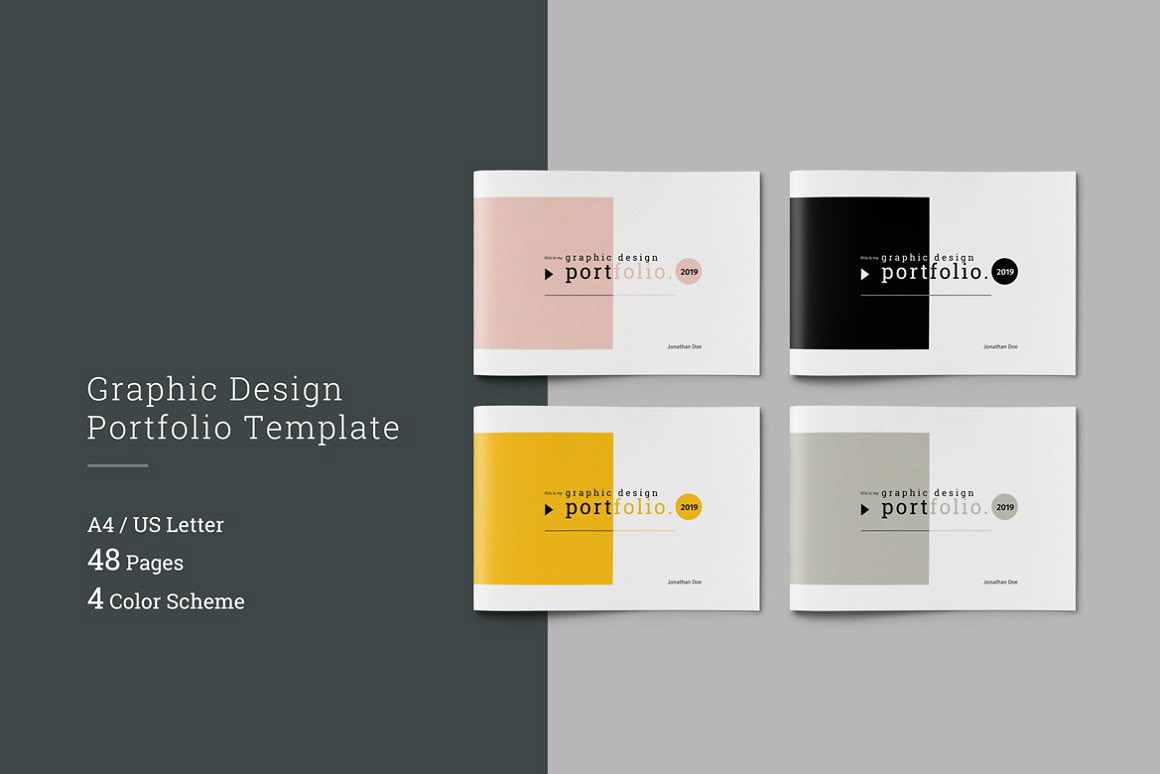Hey there! If you're diving into the world of creative portfolios, you've probably stumbled upon Behance. It's not just a platform; it’s a vibrant community where creative minds showcase their work, connect, and inspire one another. Founded by Adobe, Behance acts as a digital gallery where artists, designers, photographers, and creators from all walks of life can bring their projects to life and share them with a global audience. This is your backstage pass to the creativity of the world—a space to not only exhibit your talent but also to learn from others.
Whether you’re a seasoned professional or just starting out, Behance offers tools and features to help you cultivate and promote your portfolio effectively. From eye-catching layouts to collaborative projects, you’ll find everything you need to make your work stand out. Ready to unlock the full potential of your creativity? Let’s explore what makes Behance a fantastic platform for your portfolio!
Understanding the Importance of a Portfolio

So, why exactly is a portfolio crucial for creatives? Think of it as your calling card in the digital world. It’s more than just a collection of your work; it’s a reflection of your style, skills, and personality. Here are a few reasons why having a strong portfolio is essential:
- Showcases Your Skills: A portfolio showcases what you can do. It demonstrates your capabilities and lets potential clients or employers see the quality of your work. A well-curated selection of projects can speak volumes about your talent.
- Aids Job Opportunities: Many companies look for portfolios while hiring. Having a solid portfolio can significantly increase your chances of landing a job, as it provides concrete examples of your abilities.
- Builds Your Personal Brand: Your portfolio is a key component of your personal brand. It helps define you as a creative professional and distinguishes you from others in your field.
- Facilitates Networking: Sharing your work can connect you with like-minded professionals. Networking can lead to opportunities for collaborations, mentorships, and even freelance gigs.
- Invites Feedback: A portfolio can serve as a conversation starter. Feedback from peers can help you improve your craft and take your work to the next level.
In summary, a portfolio isn’t just important; it’s a necessary element of your creative career. It opens doors and creates opportunities that can lead to growth and success in your professional journey.
Also Read This: How to Change Text in an Image Using Different Tools
Setting Up Your Behance Account

Alright, let’s dive into how to set up your Behance account! It's as straightforward as it gets, so you won’t need to worry about any complicated processes. First, head over to the Behance website. You’ll see an option to sign up or log in. If you don’t have an account yet, let’s create one!
Here’s a quick step-by-step breakdown:
- Choose Your Method: You can sign up using your email, or you can link your account to existing social media profiles, like Facebook or Google. It’s super easy!
- Fill Out Your Information: If you’re signing up via email, enter your details—your name, email, and a secure password.
- Verify Your Account: Don’t forget to check your email for a verification message from Behance. Click on the link to activate your account.
- Set Up Your Profile: Add a profile picture, a catchy bio, and your skills. This is crucial for making a great first impression!
And voila! You’re all set up on Behance. Just remember that your profile is your digital calling card. So, make sure to keep it polished and true to who you are as a creative.
Also Read This: Best Tool for Bilibili Video Download 1080p
Steps to Create an Effective Portfolio

Now that your Behance account is up and running, it’s time to build an amazing portfolio that showcases your work! A well-crafted portfolio can open doors and attract potential clients and collaborators. Here’s how to make it effective:
- Choose Your Best Work: Less is more! Focus on quality over quantity. Select about 8-12 pieces that truly represent your skills and style.
- Organize Your Projects: Give your portfolio a cohesive feel. Group similar projects together or showcase them in a series. This helps the viewer understand your journey and growth.
- Add Project Descriptions: Don’t forget to include *descriptions* for each project. Explain your thought process, techniques used, and any challenges you overcame. This adds depth and context to your work.
- Use High-Quality Images: Make sure your visuals are crisp and clear. Blurry or pixelated images can misrepresent your talent!
- Keep It Updated: Regularly refresh your portfolio with new work. This shows that you’re active and evolving as a creative professional.
Creating an effective portfolio on Behance doesn’t have to be daunting. Just be authentic, showcase your unique skills, and watch your creative network grow!
Also Read This: Exploring Getty Images’ Extended License: Expanding Usage Opportunities for Buyers
Choosing the Right Projects to Showcase
Now that you're gearing up to create an eye-catching portfolio on Behance, one of the most critical steps is selecting which projects to include. Choosing the right projects is akin to curating a mini-exhibition of your best work. It’s not just about quantity; it’s about quality and relevance.
Here are some tips to help you decide:
- Highlight Your Best Work: Always start with your strongest pieces. These projects should reflect your skills, creativity, and unique style. Aim for quality over quantity—three amazing pieces can make a bigger impact than ten mediocre ones.
- Show Variety: Include a mix of projects that showcase different skills and styles. If you're a graphic designer, for example, feature everything from branding to web design. This variety demonstrates your versatility to potential clients or employers.
- Include Personal Projects: Personal projects can reveal your passion and creativity, often more than commissioned work. If you've taken on a project that genuinely excites you, it could resonate well with viewers.
- Tailor Your Choices: Before you finalize your selections, consider your target audience. If you’re hoping to attract a specific type of client, showcase projects that align with that vision.
- Keep It Updated: Your portfolio shouldn't be a static artifact. Regularly update it with new work, remove older projects that no longer represent your current skills, and keep it fresh and relevant.
Picking the right projects is your chance to leave a lasting impression, so take your time and choose wisely!
Also Read This: Explore If Shutterstock Is Good for Selling Photos
Designing Your Portfolio Layout
Once you’ve gathered your projects, it’s time to design your portfolio layout. A well-structured design can significantly enhance the viewer’s experience, making your work more engaging and approachable.
Here are several key considerations for designing your Behance portfolio:
| Design Element | Description |
|---|---|
| Consistency | Use consistent fonts, colors, and spacing across your portfolio. This creates a cohesive look that makes navigation easier and gives it a polished feel. |
| Visual Hierarchy | Apply size and weight to elements to guide viewers' attention. For instance, larger titles can draw attention first, followed by images and descriptions. |
| White Space | Don’t cram too much into one page. Ample white space allows your work to breathe and helps viewers to focus on each project without feeling overwhelmed. |
| Navigation | A good layout should be user-friendly. Make sure it’s easy for visitors to navigate through your projects with clear categories or filters. |
| Interactivity | Add engaging elements, such as hover effects or embedded videos, to make your portfolio more interactive. This can create a more memorable viewing experience. |
Ultimately, designing your portfolio layout is about making your best work shine. Keep the focus on your projects, and let the design enhance, rather than overwhelm, your creativity.
Also Read This: How to Upscale MidJourney Images for Print
7. Writing Compelling Project Descriptions
Alright, let's dive into the art of writing compelling project descriptions for your Behance portfolio! Think of your project description as the narrative that stitches your work together. It's your chance to tell the story behind the project and engage the viewers.
When crafting your project description, keep in mind the following tips:
- Be Clear and Concise: Aim to communicate your ideas in simple language. Avoid jargon unless necessary, and get straight to the point.
- Tell a Story: Share the journey of your project. What inspired you? What challenges did you face? A narrative can create a connection with the viewer.
- Highlight Key Features: Emphasize what makes your project unique. Mention techniques, tools, or concepts that stand out.
- Include Context: Explain the project’s goal, target audience, and any relevant background information that might help viewers understand your perspective.
- Use Visuals Wisely: Sometimes, visuals can do the talking! Referring to specific images in your description can enhance understanding and interest.
It's essential to write in your authentic voice; this makes your description feel more personal. Conclude with a call to action! You might invite your audience to leave feedback or ask questions. Engaging with your viewers can lead to insightful conversations and opportunities.
Also Read This: Everything You Need to Know About Twitter Video Tools
8. Utilizing Tags and Categories for Better Visibility
Now that you've crafted a stunning portfolio piece and written an engaging project description, let’s focus on how to increase the visibility of your work on Behance. This is where tags and categories come into play – they are your secret weapons!
Using relevant tags and categories effectively can significantly enhance the discoverability of your projects. Here’s how:
- Choose Relevant Tags: Think of tags as search keywords. Use descriptive terms that directly relate to your work, like “graphic design,” “illustration,” or “web design.”
- Be Specific: While general tags can attract a broader audience, specific tags (like “minimalist logo design”) can help you connect with users looking for niche projects.
- Utilize Existing Categories: Behance allows you to categorize your project. Make sure to select the most accurate category, whether it’s photography, UI/UX, or fine arts. This helps in getting your work seen by the right audience.
- Watch Trends: Keep an eye on trending tags within your field. Incorporating these can increase your chances of appearing in search results.
- Limit Your Tags: While it might be tempting to use every possible tag, try to limit yourself to around 5-10 relevant ones. This keeps your project focused and clear.
By thoughtfully utilizing tags and categories, you'll not only enhance your visibility but also reach potential clients, collaborators, and a broader audience who appreciate your craft. Happy tagging!
Also Read This: How to Contact Behance by Phone Number
9. Promoting Your Portfolio on Social Media
So, you've created a stunning portfolio on Behance, and now it’s time to showcase your work to the world! Promoting your portfolio on social media is a smart way to reach a larger audience and attract potential clients. Here are some effective strategies to get started:
- Share Your Projects: Regularly post your new Behance projects on social media platforms such as Instagram, Twitter, Facebook, and LinkedIn. Use captivating visuals and a brief description to draw attention.
- Engage with Your Audience: Respond to comments and messages promptly. The more you interact with your followers, the more likely they are to share your work.
- Use Relevant Hashtags: Incorporate popular and relevant hashtags in your posts to increase visibility. For example, #Design, #CreativePortfolio, or #GraphicDesign can help you reach a targeted audience.
- Join Design Communities: Participate in design-related groups or forums on Facebook or LinkedIn. Share your portfolio link when appropriate and contribute to discussions.
- Create Behind-the-Scenes Content: Offer your audience a glimpse into your creative process. Share stories or short videos showing how you developed your projects. This adds a personal touch and can spark more interest.
- Collaboration: Partner with other creatives or influencers to cross-promote each other’s work. This not only expands your reach but also helps you connect with like-minded individuals.
Remember that consistency is key! Keep your social media presence active to maintain interest in your portfolio.
10. Conclusion and Next Steps
Congratulations on taking the vital steps to create and promote your portfolio on Behance! A well-crafted portfolio can significantly enhance your credibility and lead to exciting career opportunities. So, what’s the next step?
First off, continue to improve your skills and push your creative boundaries. Make it a habit to update your portfolio regularly with new projects that showcase your growth and versatility.
Here are some actionable next steps you can take:
- Review and Revise: Periodically reassess your portfolio. Remove older works that no longer reflect your current style or quality.
- Network: Attend design meetups, workshops, or online webinars. Networking can lead to collaborative projects or job opportunities.
- Feedback: Seek constructive criticism from peers or mentors to help refine your work and presentation.
- Explore Other Platforms: Although Behance is great, consider showcasing your work on other platforms like Dribbble or Adobe Portfolio to reach different audiences.
- Keep Learning: Participate in online courses or tutorials to enhance your skills and keep your portfolio fresh.
In summary, building a portfolio is an ongoing journey. Embrace the process, stay motivated, and keep sharing your passion with the world. Happy creating!
 admin
admin








